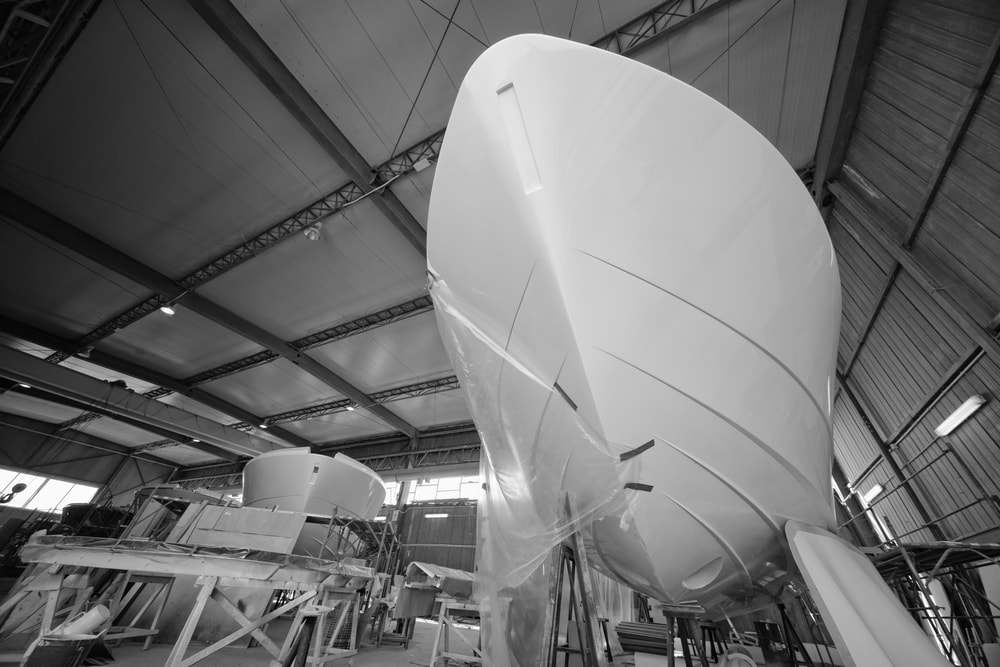To the untrained eye, yacht fairing and surfacing can seem quite similar. After all, both procedures refer to prepping the surface before painting a yacht.
However, there are a few subtle differences between the two that could make or break the yacht painting process. That’s why it’s paramount to understand how each work and what they require before beginning any project.
Here’s everything you need to know about yacht fairing and surfacing.
What Does Fairing Involve?
During the fairing process, you use a trowel to apply a filler putty of significant thickness. The result will be a new line or shape of the surface, instead of a simple dent filling.
The composition of a fairing putty includes:
- Resin, whether it’s epoxy, polyester, or vinyl ester;
- A catalyst or hardener that activates the resin, making sure that it cures properly to a plastic material. Only use the amount of catalyst or hardener specified by the manufacturer;
- A low-density filler (either epoxy or chopped fiber) that will thicken the putty and stop it from running;
- An additive that will make it easier for the resulting substance to sand later, softening the combined resin and thickening agent;
What Are the Steps of a Fairing Process?
- Surface Preparation – Always consider the surface material before prepping it for yacht fairing. If the surface is metallic, you will need an etching primer for proper adhesion. Wood, on the other hand, is a very absorbent material, so before applying the fairing compound, you should wet out the surface with a coating of epoxy. Then you can either wait for it to cure and sand or just apply the compound once the surface starts getting sticky. A typical surface preparation should include: cleaning, grinding, sanding, and then cleaning again.
- Applying the Fairing Compound – Try to apply the putty using a plastic spreader. Apply it in thin, multiple layers to avoid any exothermic curing reactions.
- Sanding and Wiping – After the last layer of fairing compound completely cures, you can start the yacht sanding process. That will smooth out any high spots and will prepare the surface so that the primer can better adhere. There is no rule as to how much you should sand, as it depends on how you applied the fairing compound. Simply sand until the surface looks fair and smooth enough for the next operation. Remove any sanding residues from the surface and then wipe it down using a clean, lint-free cloth and some alcohol or acetone. Be careful, though: sanding can generate toxic dust, so make sure the area you are working in is well-ventilated, and you wear protective gear during the process.
What Does Surfacing Involve?
Yacht surfacing involves the use of liquid, thick coatings that fill or cover any minor physical imperfections on the boat’s surface, such as scratches, pinholes, fine cracks, molding defects, and other flaws. Contrary to fairing compounds, surfacing products are designed to address minor physical defects that can be found on a surface with an otherwise fair line.
What Are the Steps of a Fairing Process?
- Examine the Surface – Check the surface you are preparing for any minor imperfections, such as scratches or marks, and lightly mark them with a pencil. Never use a marker or pen.
- Sanding – Before applying any fillers, make sure to sand the surface and even it out. Then, use dry, compressed air to blow off any dusting and wipe the surface using a clean, lint-free cloth.
- Apply the Fillers – Before filling in the sanded surface, make sure the filler you are applying has a uniform color and does not present any streaks or lumps. The fillers will need 12 to 24 hours to cure and will require sanding after. Repeat this step until the surface is clear of any imperfections.
- Apply Finishing Coatings – Before applying top coats, always make sure the surface has no more imperfections. Finishing coats will also require sanding and cleaning afterward.
Yacht surfacing and fairing are meticulous tasks that can take a lot of time and effort to complete. But, if you want an a la carte yacht painting, then they are necessary. Professional yacht painting services, such as Chi Yacht Refinishing can simplify the process and help you achieve outstanding results. Give us a call to see what we can do for you.

